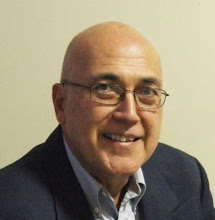Of course, those out there with an anti-catholic bias would say "Of course, they'd say that."
The story purports to implicate Ratzinger (now Pope Benedict XVI) as complicit in protection of clergy involved in paedophilia.
Well, again, we see a media frenzy so anti-catholic, it's just not funny. When one slings mud, especially at someone dressed in all-white, some of it will stick.
As mentioned in an earlier post,it is so easy to do that with a well-known figure, like the Pope.
Let's go back to the media frenzy. And, put it into perspective.
I am grateful to Phil Lawler for pointing out just how this whole thing is one big media frenzy. So frenzied that no one really questions "stories", as long as they are anti-catholic.
Lawler's principal point is that journalism standards are so low, no one who reported the story bothered to ask questions.
Lawler presents the questions, thus:
• Was Cardinal Ratzinger responding to the complaints of priestly pedophilia? No. The Congregation for the Doctrine of the Faith, which the future Pontiff headed, did not have jurisdiction for pedophile priests until 2001. The cardinal was weighing a request for laicization of Kiesle.He further states: "This was not a case in which a bishop wanted to discipline his priest and the Vatican official demurred. This was not a case in which a priest remained active in ministry, and the Vatican did nothing to protect the children under his pastoral care. This was not a case in which the Vatican covered up evidence of a priest's misconduct. This was a case in which a priest asked to be released from his vows, and the Vatican-- which had been flooded by such requests throughout the 1970s -- wanted to consider all such cases carefully. "
• Had Oakland's Bishop John Cummins sought to laicize Kiesle as punishment for his misconduct? No. Kiesle himself asked to be released from the priesthood. The bishop supported the wayward priest's application.
• Was the request for laicization denied? No. Eventually, in 1987, the Vatican approved Kiesle's dismissal from the priesthood.
• Did Kiesle abuse children again before he was laicized? To the best of our knowledge, No. The next complaints against him arose in 2002: 15 years after he was dismissed from the priesthood.
• Did Cardinal Ratzinger's reluctance to make a quick decision mean that Kiesle remained in active ministry? No. Bishop Cummins had the authority to suspend the predator-priest, and in fact he had placed him on an extended leave of absence long before the application for laicization was entered.
• Would quicker laicization have protected children in California? No. Cardinal Ratzinger did not have the power to put Kiesle behind bars. If Kiesle had been defrocked in 1985 instead of 1987, he would have remained at large, thanks to a light sentence from the California courts. As things stood, he remained at large. He was not engaged in parish ministry and had no special access to children.
• Did the Vatican cover up evidence of Kiesle's predatory behavior? No. The civil courts of California destroyed that evidence after the priest completed a sentence of probation-- before the case ever reached Rome.
He also questions media competence, with the following point: "Competent reporters, when dealing with a story that involves special expertise, seek information from experts in that field. Capable journalists following this story should have sought out canon lawyers to explain the 1985 document-- not merely relied on the highly biased testimony of civil lawyers who have lodged multiple suits against the Church."
The latter point is interesting as it posits the interested parties who will gain from the media picking up this story.
Back to Lawler's post:"If they had understood the case, objective reporters would have recognized that they had no story. But in this case, reporters for the major media outlets are far from objective." He states further:
The New York Times-- which touched off this feeding frenzy with two error-riddled front-page reports-- seized on the latest "scoop" by AP to say that the 1985 document exemplified:
…the sort of delay that is fueling a renewed sexual abuse scandal in the church that has focused on whether the future pope moved quickly enough to remove known pedophiles from the priesthood, despite pleas from American bishops.
Here we have a complete rewriting of history. Earlier in this decade, American newspapers exposed the sad truth that many American bishops had kept pedophile priests in active ministry. Now the Times, which played an active role in exposing that scandal, would have us believe that the American bishops were striving to rid the priesthood of the predators, and the Vatican resisted!
No, what is "fueling a renewed sexual abuse scandal" is a media frenzy. There is a scandal here, indeed, but it's not the scandal you're reading about in the mass media. The scandal is the complete collapse of journalistic standards in the handling of this story.
So, what do you think? Media frenzy on an easy target? Anti-catholic bias again showing its face?
Makes one wonder.

No comments:
Post a Comment